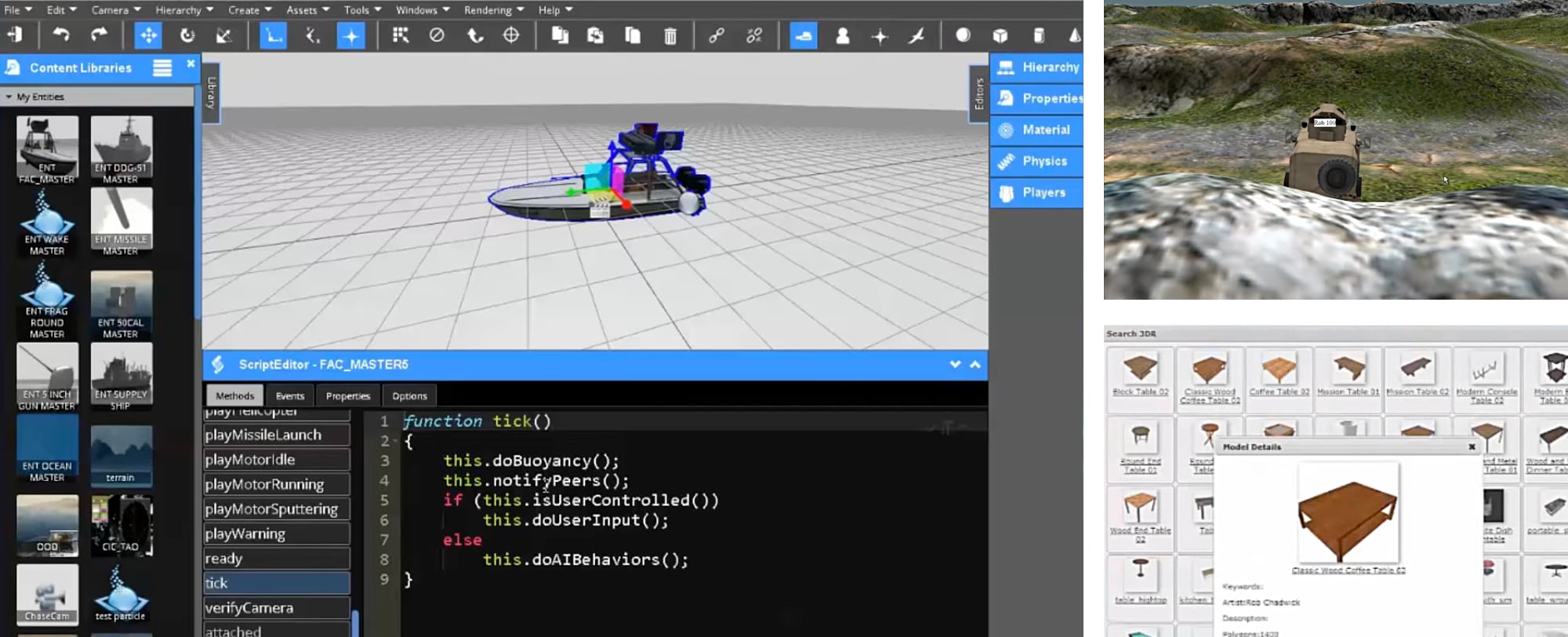Virtual World Framework Closed

A cloud-based platform for authoring and delivering 3D visualizations and simulations for learning programs.
The Challenge
Immersive e-learning environments—such as the computer-based simulated environments called virtual worlds—have immense potential for increasing learner motivation and performance-based learning outcomes. However, there are numerous barriers to creating and deploying 3D simulations for education and training, including software distribution and installation, licensing fees, vendor locks, and complex authoring tools limited to a single user.
The Solution
An open-source collaboration tool that brings interactive simulation authoring to the web, and a multi-player simulation engine to allow multiple developers to team up and simultaneously create a virtual world for learning purposes.
About the Project
The Virtual World (VW) project established a sandbox for users to collaborate on developing, designing, and playing simulations for learning purposes. This platform runs on a modern web-browser, without plugins or downloads. VW is open-source, open-standard, and can be run on WebGL (Web Graphics Library). WebGL is a JavaScript API (Application Programming Interface) for rendering interactive 2D and 3D graphics within any compatible web browser.
The VW Sandbox (VWS) tools were created for developers to search, use, and reuse content including audio, video, or 3-D objects. VWS allows developers to build their own library of commonly used content. Developers can simultaneously create a simulation or a game and embed finished simulations into their LMS (Learning Management System).
VWS can be used in academic contexts:
-
Teaching Development: Students learn programming by building a library of reusable components, and then use those components to design a game.
-
Teaching Open-Source Simulation (OSS) Concepts: Teachers assign students to participate in the open-source project. VWS has many extension points for features and tools.
-
Supporting VW-based distributed collaboration: Teachers and students can interact remotely in a virtual world as part of a learning program.

